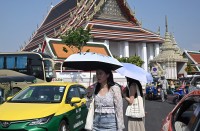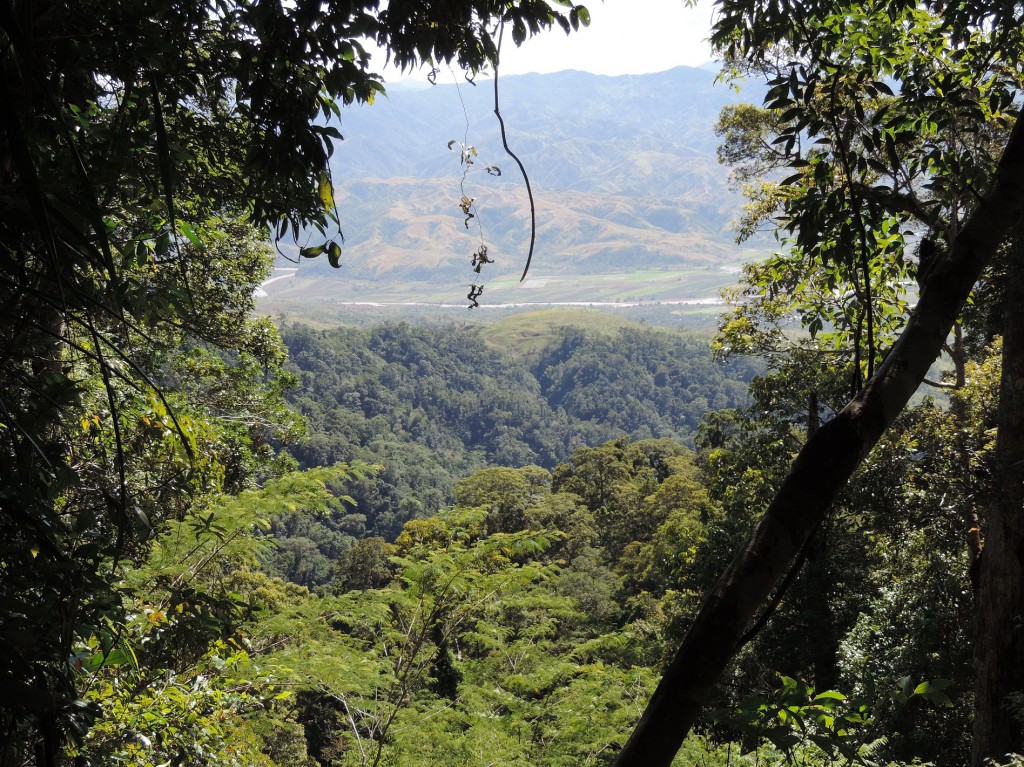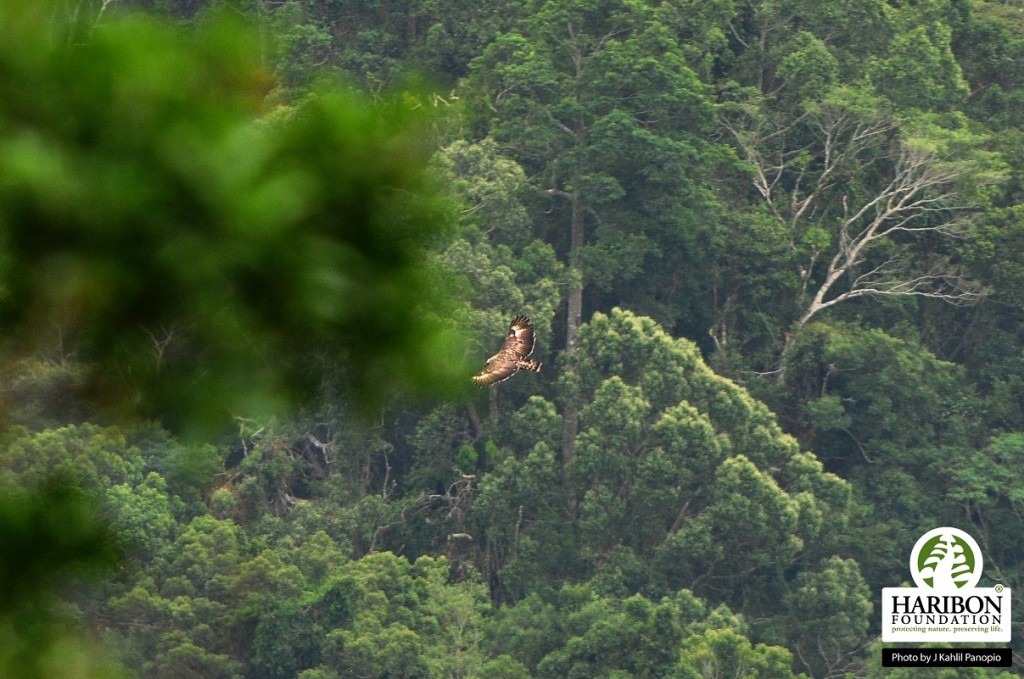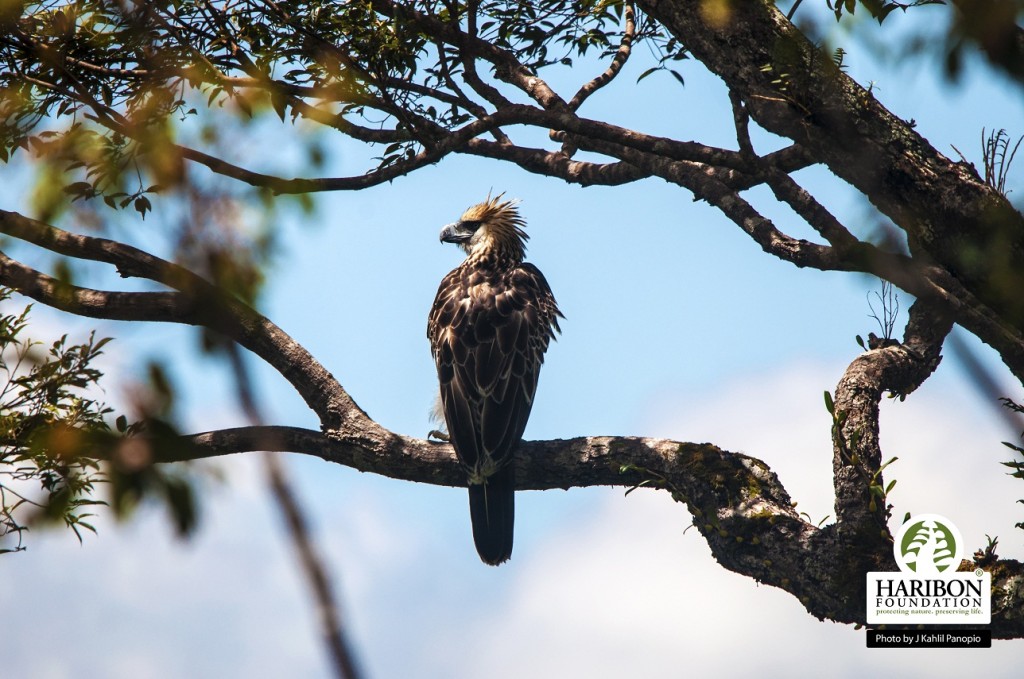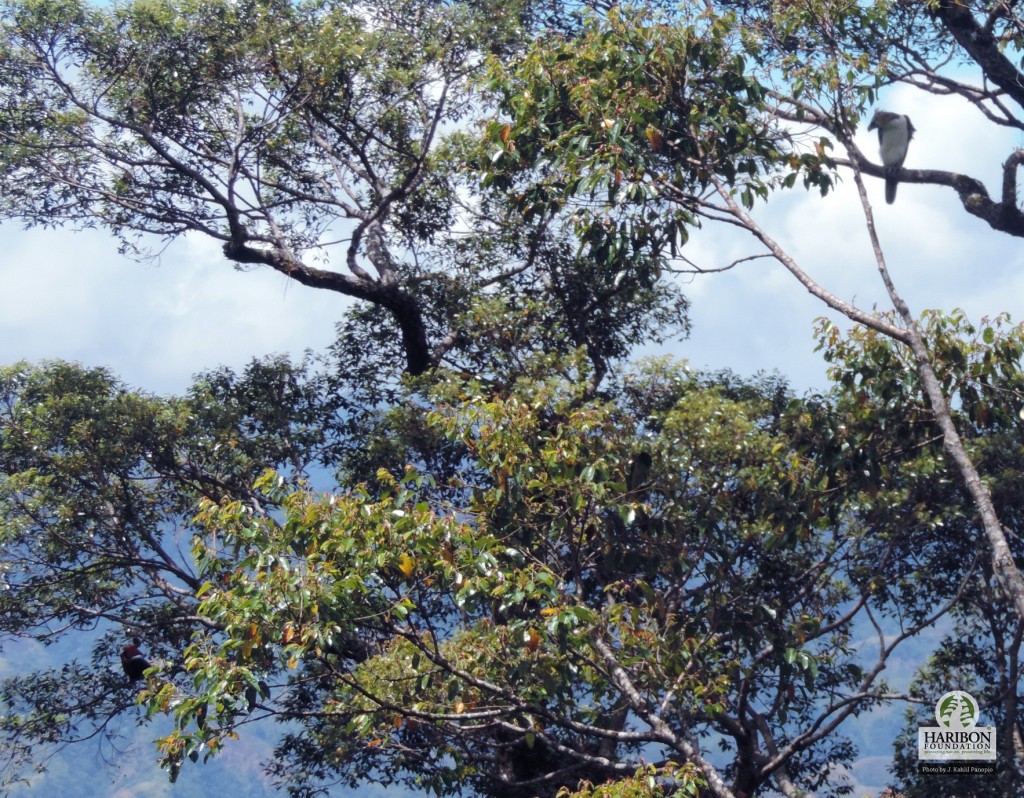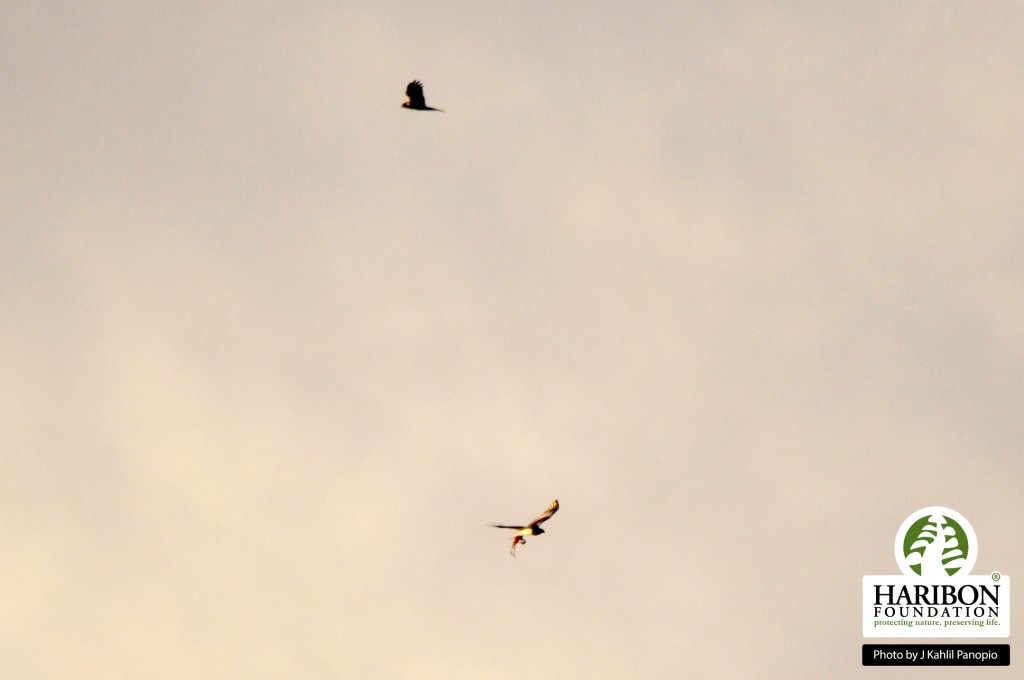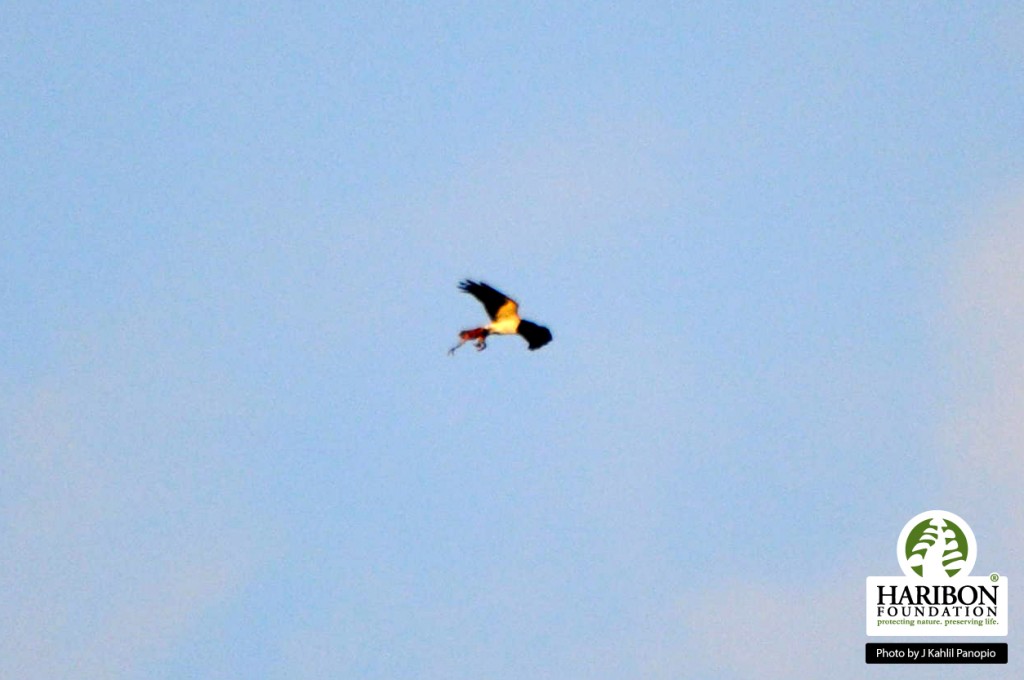Text and photos by J Kahlil Bohol Panopio | Haribon Foundation
We received a report last February that there was a recent sighting of a juvenile Philippine eagle in the Mingan Mountains of Gabaldon, Nueva Ecija. This led to the formation of a team to validate the sighting and document the presence of Philippine Eagles in the area.
Figure 1. The Mingan Montains in Gabaldon, Nueva Ecija where its lowland dipterocarp forest is a habitat to Philippine Eagles.
Day 1
A month after the initial sighting, Haribon, along with Community Environment and Natural Resources Office of Dingalan and the Regional Eagle Watch Team of DENR Region 3, set out to validate the sightings of our rare national bird. It was a three hour trek going to the site where the Philippine Eagle was first sighted.
We started the fieldwork by establishing an observation area at vantage point on top of a ridge facing east at 800 meters above sea level. The observation point is 20 minutes away from our camp site. The area was a closed canopy lowland dipterocarp forest with Tanguile tree Shorea polysperma as the dominant species. The team observed for the whole day but the eagle was nowhere in sight. The observation was not a total loss because we were still able to observe several notable birds in the area such as the Red Crested Malkoha, Philippine Fairy Bluebird, Luzon Tarictic Hornbill and the Rufous hornbill, all Philippine endemics.
Figure 2. A view from our observation point at 800masl.
Day 2
It was windy with light rain showers in the morning while the afternoon was sunny with occasional wind bursts from time to time.
Even under the unfriendly weather, the team was still able to observe an Eagle soaring just above the canopy of the forest cover from 8-10 in the morning. The team ended the observation with a confirmed sighting of a Philippine Eagle.
Day 3
The third day was a special day. It was the first day that we were able to take a photograph of the Philippine Eagle just above the forest cover.
We started our usual observation early morning and started hearing a Philippine Eagle calling. It was 9 in the morning when we saw an Eagle fly over the spot where it was initially reported. We carried on with our observation and around noon time, we got a chance to snap a shot of the Philippine Eagle flying over the forest flying over a path following the river system.
Several raptors were also observed in the area such as Philippine Serpent Eagles and Oriental Honey Buzzards. The observation time was cut short because of continuous rainfall throughout the afternoon.
Figure 3. A Philippine Eagle flying over the forest of the Mingan Mountains.
Days 4
The team wasn’t able to do raptor observations because of strong winds and heavy rainfall. It was pouring the whole day but “Kalaws” or Rufous Hornbills calls were still being heard near our camp site. The Philippine Eagle was not heard the whole day.
Day 5
The team started out early. It was still foggy with occasional drizzles but the team pushed through with the observation. The fog and cloud cover was thick for most of the observation in the early morning but it did not stop the team from being optimistic.

Figure 4. One of our guides, Kuya Marlon Tabliga removing water from our tent-flies in our fifth day of the survey.
Figure 5. The scene during the morning of the fifth day of our survey. It was cold and damp with almost zero visibility.
It was half past nine when strong winds started to blow away the clouds and fog surrounding us. It was cold and damp but the team still persevered. It was ten in the morning when we started seeing blue skies. We observed the forest below us trying to look for the eagle.
I was looking around trying to spot the slightest movement in the surroundings, a part of the routine observation.
Little did I know that the winds that blew away the clouds carried something along with it. I turned my head towards a tree top about 20 meters away from our observation point. There it was, to my shock and amazement, a juvenile PHILIPPINE EAGLE! I quickly grabbed a hold of my camera and took as many pictures as I can. I knew that the King of Birds might fly off at any moment.
It was astonishing seeing our national bird, up closer and personal. The juvenile stayed perched on top of a Tanguile tree about 30 meters tall. The large eagle was drying off its feathers, preening once in a while and looking around its habitat. It was even visited by a Rufous Hornbill which it had a staring competition with that lasted 10 seconds before the hornbill flew off leaving the young eagle behind.
The eagle remained perched on top of the tree around noon while other raptors circled the skies.
Oriental Honey Buzzards and Crested Serpent Eagles were observed flying around our observation post while the Philippine Eagle kept its position. It was not until half past twelve that it started stretching its muscles. The juvenile spreads its wings in an apparently stretching position. It then leaped from branch to branch surveying its surroundings. It was 3:20 pm when the juvenile finally took off northwards seemingly focused in a target.
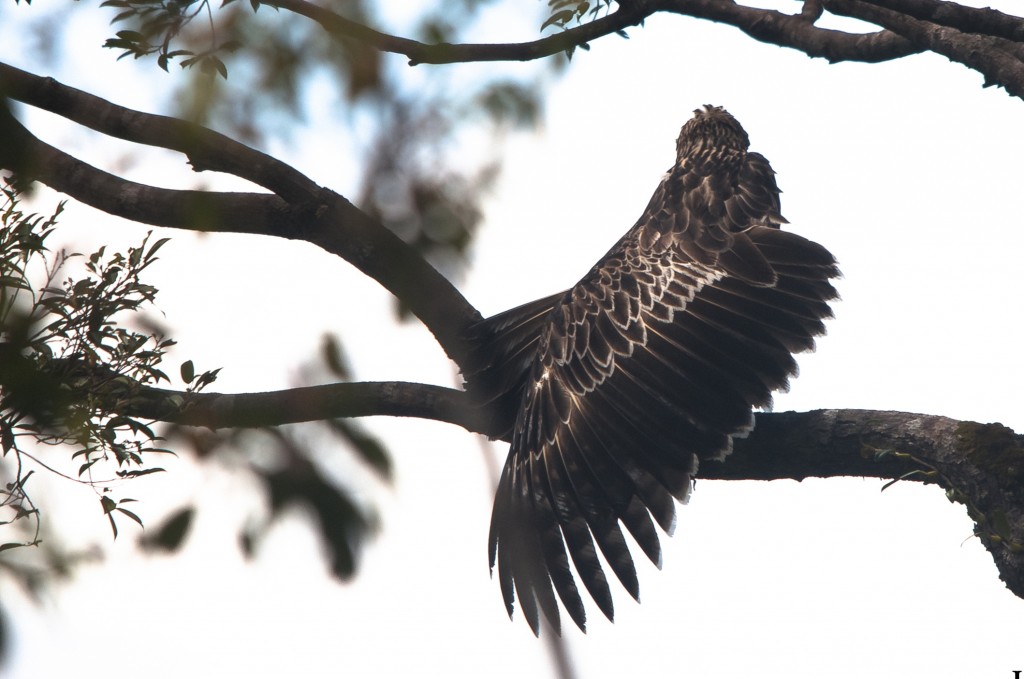 Figure 6. The juvenile Philippine Eagle stretching its wings.
Figure 6. The juvenile Philippine Eagle stretching its wings.
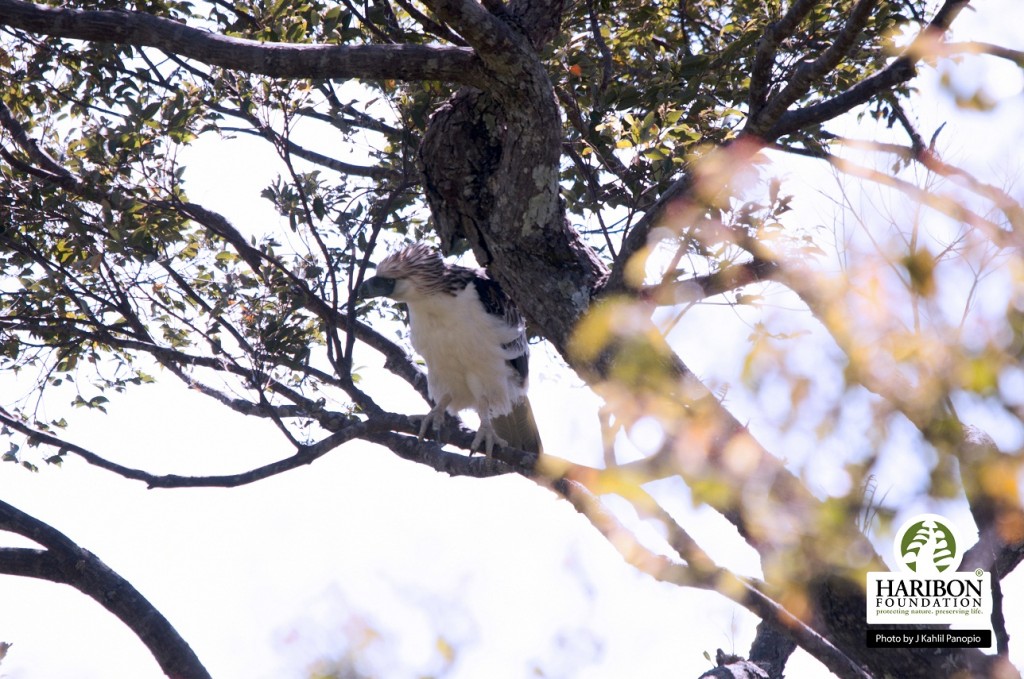 Figure 7. The Juvenile checking its surroundings.
Figure 7. The Juvenile checking its surroundings.
Day 6
In the morning of the 6th day, the team was starting to pack up and trek back to our jump off point and continue observation at a lower elevation. As early as 5:15am, the team heard a Philippine Eagle call twice towards the direction of our close encounter with the juvenile. About an hour later, we heard a large bird swooping down in a tree just above our camp site. It was the juvenile. It perched for almost two hours while making short high pitched calls several times. We took off from our camp site around 9 am and arrived at the jump off point at around 11 pm. The team continued observation at the jump off point using spotting scopes to assess extent of the territory of the eagle. It was around 5 pm when the team decided to pack up and head back to Kuya Marlon Tabliga’s (one of our guides) house to rest. While walking home, Kuya Marlon noticed two raptors soaring high in the sky flying in circles. We decided to get a better view to identify the birds of prey. We went to a nearby rice paddy for a more field of view. Looking through our binoculars, we saw two Philippine Eagles with one carrying a monkey! The pair flew off to the direction where the team observed the juvenile. There is no better way to conclude our mission to look for the Great Philippine Eagle.
Figure 8. A pair of Philippine Eagles circling the sky in the twilight.


